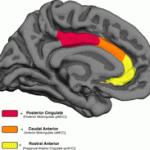 Research published online in the Proceedings of the National Academy of Sciences shows that for Danish men who survived skull fractures during this time period, the risk of dying at any given moment was 6.2 times higher than for their uninjured counterparts. By comparing the age at which the fracture was received with the age at which the victims eventually died, the team was able to calculate whether an instance of severe head trauma increased the victim’s odds of dying in the following years. In present times, head trauma increases the risk of death between two- and fourfold. The sixfold increase that the researchers observed likely reflects the advances in medical care, treatment protocols, and better societal support systems for trauma patients, the article concludes. Unfortunately, the scientists were unable to determine the actual cause of death for the vast majority of the samples, making it impossible to rule out confounding factors.
Research published online in the Proceedings of the National Academy of Sciences shows that for Danish men who survived skull fractures during this time period, the risk of dying at any given moment was 6.2 times higher than for their uninjured counterparts. By comparing the age at which the fracture was received with the age at which the victims eventually died, the team was able to calculate whether an instance of severe head trauma increased the victim’s odds of dying in the following years. In present times, head trauma increases the risk of death between two- and fourfold. The sixfold increase that the researchers observed likely reflects the advances in medical care, treatment protocols, and better societal support systems for trauma patients, the article concludes. Unfortunately, the scientists were unable to determine the actual cause of death for the vast majority of the samples, making it impossible to rule out confounding factors.
via Science/AAAS | News.
This fantastic performance, he said was the result of 15 minutes of brain training per day. I have just had to look up the name of my opponent – but she no doubt remembers mine to this very day – and that may also be a sign of which one of us is regularly doing our little brain-training exercises.
 They want to replace traditional brawn and metal with unconventional materials to create cheaper and more effective soft machines.
They want to replace traditional brawn and metal with unconventional materials to create cheaper and more effective soft machines. Scientists gave navigational skills to blind rats by wiring them with a compass that sends electric signals to their brain when they’re facing north or south.
Scientists gave navigational skills to blind rats by wiring them with a compass that sends electric signals to their brain when they’re facing north or south. Unpowered mechanical design lowers the energetic costs of walking.
Unpowered mechanical design lowers the energetic costs of walking. Monkeys use a distinct set of neurons to predict whether a fellow primate is likely to cooperate for a common good. Changes in these newly identified ‘other-predictive’ neurons may be relevant in social behavioural disorders such as autism, the authors say.
Monkeys use a distinct set of neurons to predict whether a fellow primate is likely to cooperate for a common good. Changes in these newly identified ‘other-predictive’ neurons may be relevant in social behavioural disorders such as autism, the authors say. The proliferation of 3-D printers has had an unexpected benefit: The devices, it turns out, are perfect for creating cheap prosthetics. Surprising numbers of children need them: One in 1,000 infants is born with missing fingers, and others lose fingers and hands to injury.
The proliferation of 3-D printers has had an unexpected benefit: The devices, it turns out, are perfect for creating cheap prosthetics. Surprising numbers of children need them: One in 1,000 infants is born with missing fingers, and others lose fingers and hands to injury. “SuperAgers” have a thicker anterior cingulate cortex that may represent a biological signature of high memory capacity in aging.
“SuperAgers” have a thicker anterior cingulate cortex that may represent a biological signature of high memory capacity in aging. Research published online in the
Research published online in the  Course description
Course description